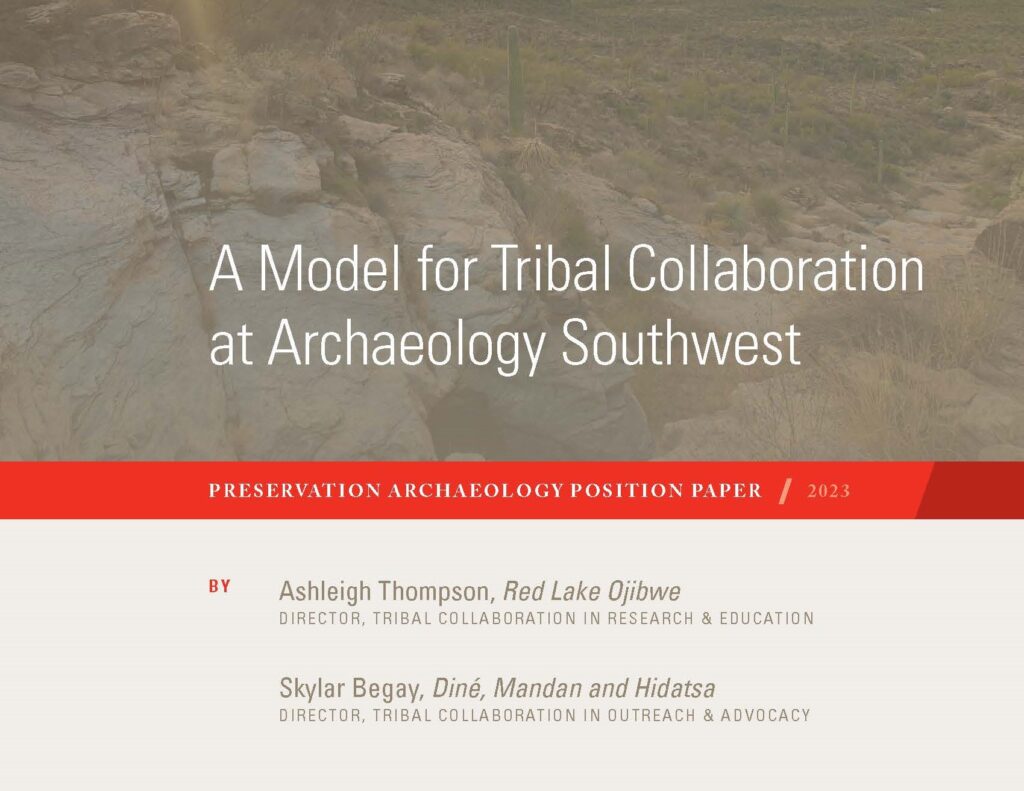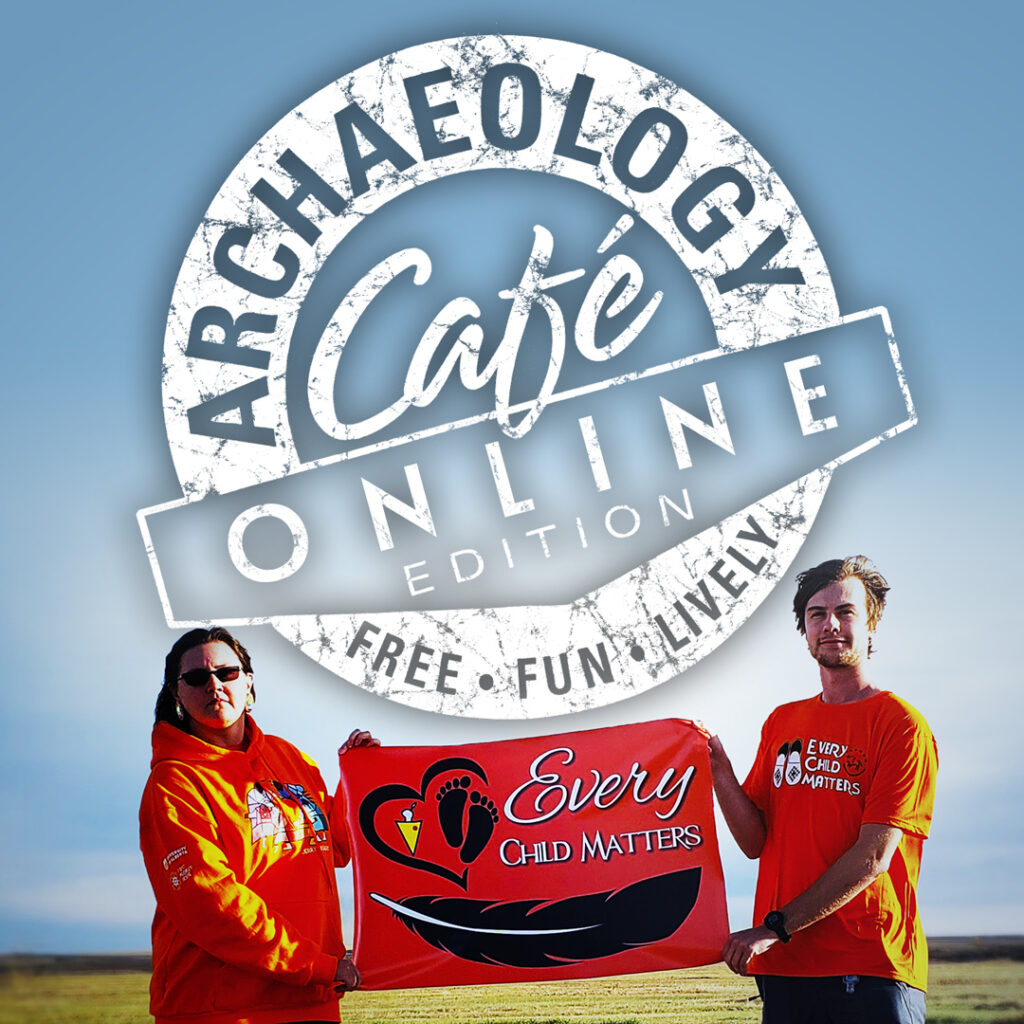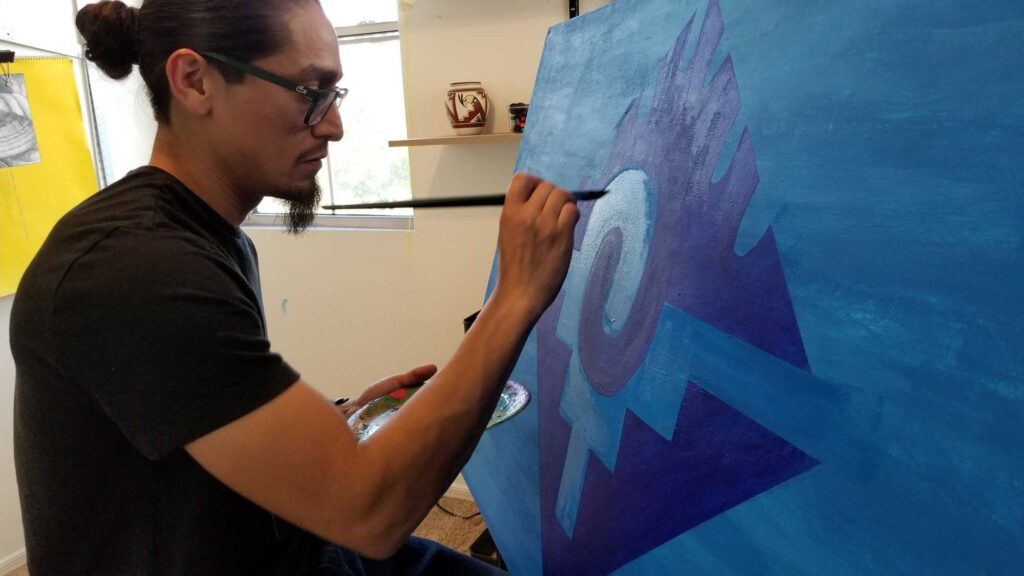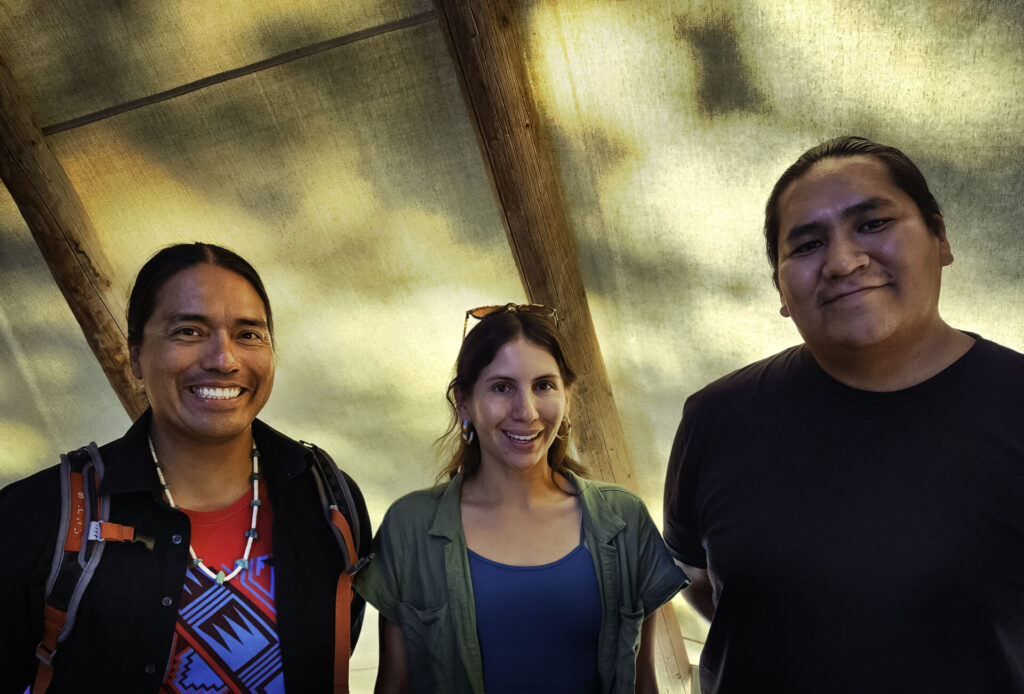- Home
- >
- Preservation Archaeology Blog
- >
- Walking the Walk: Applying the Tribal Collaboratio...

A question and a phrase have been central since April: “It is easy to do things well, but are you doing things right?” and “Tactics are doing things right. Strategy is doing the right things.” Along with the guidance and philosophy in the TCM, thinking strategically about how to implement the TCM in our day-to-day work has been paramount. For further context, many readers will know that Bill Doelle will be retiring very soon. In preparation for his retirement, we have been seeking to share leadership among ASW staff. We have also been building relationships among ourselves. In short, we can do ALL the things, but if we aren’t doing the right things, then our wheels are spinning but we’re going nowhere.
In order to accomplish these two goals of building leadership at multiple levels and building good relations with each other, we are “de-siloing.” As you can imagine, a silo mentality is not conducive to collaboration. Specific steps taken to address this are monthly Directors’ meetings, Research meetings, and Staff lunches.
The Directors meeting is a time to come together and talk, stay updated on each others’ activities, look for collaborative opportunities, and, most importantly, strategize on how to further implement the TCM and enact leadership across the organization.
The Research meeting, headed by Jeff Clark, has consisted of presentations from our research team, showcasing past, ongoing, and future research of our diverse team and their path that led them to working at Archaeology Southwest.
The Staff lunch is open to all staff and is organized by our Office Manager Linda Vossler. In addition, we invite our close collaborators, including graphic designer Kathleen Bader of Cracked Earth Creative. Linda has been working hard to have these lunches catered by Indigenous-owned businesses around Tucson such as the San Xavier Co-Op. This informal event is a time to get our team together in-person and to share a meal over conversation.
Altogether, the purpose of these meetings and gatherings is to build relationships among ourselves so that in turn we can be in good relations with our collaborators, Indigenous or not. They also serve to reduce separation between our various programs to proactively build resilience for the major transition ahead as Bill retires.
Building and Maintaining Relationships
While doing all of this work internally, we have also been hard at work building relationships with Tribal Nations, Indigenous-led organizations, and Indigenous individuals. The 2022–2023 Archaeology Café series’ theme was all about collaborative research, and the majority of the presenters were Indigenous. The 2023–2024 series will also elevate many Indigenous voices in the traditional foods and foodways world.

In the research arena of our work, the cyberSW team created a Tribal Working Group that advises our researchers on how to make cyberSW more relevant and responsible to Indigenous people. The group is made of seven members representing the Hopi, Diné, Salt River, Gila River, Southern Ute, and Ohkay Owingeh communities, and we are in the process of adding more. Over the last year and a half, the meetings have helped guide the development of the database as it evolves. In addition, we hired Caitlynn Mayhew (Diné) as the cyberSW Native American Fellow. She and the cyberSW team are in the process of creating an Indigenous Wildlife Field Guide in collaboration with Tribes of the Southwest.
One partnership that has led to new avenues of outreach is with our collaborator, Cahokia PHX, which is Indigenous-led and Women-owned. This relationship started when Respect Great Bend (RGB) coalition member DJ Portugal, Federal Climate Organizer for Chispa AZ, introduced Sky to Mike Webb of Cahokia, where he is the Community Cultivator. That relationship led to a day hiking in the Great Bend of the Gila with Mike and Chicano and Akimel O’odham artist Angelo Cortez. The hike gave Angelo an opportunity to connect with the land and produce four paintings that are now used to advocate for and inspire the protection of the Great Bend of the Gila. You can read more about that day in Sky’s interview with Angelo.

As stated in the TCM, we strive not to make relationships one-off transactions, and so we have kept in touch with Angelo and Mike. Through that relationship, Respect Great Bend and Save History were given the opportunity to participate in Cahokia PHX’s Indigenous Peoples’ Day Festival in Phoenix on October 9. It was invigorating to see Indigenous leaders, artists, designers, organizations, food trucks, and people come together to celebrate our collective heritage. Spreading the word about Respect Great Bend and Save History at this event was invaluable, as both of these protection efforts seek to elevate Indigenous voices and to protect cultural landscapes and sites.
The Save History team has collaborated with many Indigenous individuals this year, as well. We published our first comic, illustrated by artist Kayla Shaggy (Diné and Anishinaabe). Additionally, we conducted Archaeological Resources Protection training courses in Arizona and Oklahoma with several Indigenous people in attendance. We also restored a vandalized petroglyph site in collaboration with the Navajo Nation, Hopi Ancestral Lands Conservation Corps, and Gila River Indian Community. Currently, we have hired five Indigenous artists to create a Children’s Activity Book to teach kids about how to interact respectfully with Indigenous cultural sites.
We (Ashleigh and Sky) have also had the opportunity to attend the Bears Ears Intertribal Gathering for the past two years. For the 2023 Gathering, Caitlynn Mayhew joined us. You can read more from Caitlynn about this trip in her recent blog post. At these gatherings, we participated in Indigenous Strategy Sessions with Indigenous leaders to discuss how we can collectively make progress in Tribal Co-Management of public lands and grassroots organizing across the country. In these ways, we hope to learn from Indigenous-led organizations, leaders, and Elders all across the west. We look to them when we ask ourselves, “How should we go about this?” We are excited about continuing the relationships built there in Dinétah.

Respect Great Bend has also invested a lot of time building relationships with the people of the San Lucy District of the Tohono O’odham Nation. After many meetings with the District Tribal Council and elected officials, Sky recently had the opportunity to present directly to the community members as well as the Elders in the community. The proposed Great Bend of the Gila National Monument is literally the backyard of this District, and so the RGB coalition has sought to thoroughly understand the community’s concerns and questions about the protections. We hope to strengthen this relationship over the coming years, because designation as a national monument is really just the first step in protecting the Great Bend of the Gila. We have also been traveling to many other Tribal Nations seeking the support of the Peoples who have connections to the Great Bend.
People are Curious! Looking to the Future
Though we were aware that the TCM would have wide and varying impacts on our work here at ASW, we have been delighted to see that other organizations across the Southwest and beyond are interested in how it can be utilized by their respective organizations. Of course, every organization is different and unique, not only in what they do but also in how they do it. For that reason, we have found that TCM’s aim of providing more of a why and less of a how to do your work is its strength. We find it encouraging that other organizations in many different fields are looking to collaborate with Tribes more and more. Nationwide, it seems there is a great transition to upholding Indigenous sovereignty, and we are happy to play a small part in that movement.
The new year will bring a new CEO and another round of strategic planning for our organization. Tribal collaboration has enriched our work, and we look forward to progress on our current projects, as well as adding new projects and relationships in the future. Many of our fundraising goals for the coming years are also driven primarily by our collaborative projects and goals. A central challenge that has come up time and time again is that deep collaboration and relationship building takes time, and funding cycles and grant deadlines often do not align with those timelines. Extended timelines also require greater monetary investments, but over and over we have found that it is more than worth the investment. It is as it was put forth in the TCM: Be ready to be in it for the long run. And that’s what we look forward to.